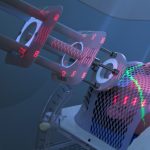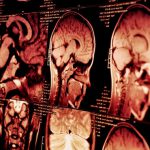If the doctor suspects brain tumor, the following are tests and mechanisms to take.
1. A neurological exam
This includes checking the sensory perceptions like vision, hearing, balance, coordination, reflexes, tactility, among other things. Accordingly, the difficulty in one or more of the may indicate the incidence of brain tumor.

2. Imaging tests.
These tests take detailed pictures of the tumor tissues. A colored dye helps study the veins, blood flow, and thereby tumor regions. Usually, the following are the screening tests for brain tumor.
a. Magnetic Resonance Imaging
b. Computer Tomography
c. Positron Emission Tomography
3. Biopsy.
Biopsies for brain tumor are a part of surgery to remove tumor tissues using a needle to study at the laboratory.
4. Neurocognitive assessment.
Here, a detailed assessment of all major functions such as storage and retrieval of memory, expressive and receptive language abilities, calculation, dexterity, and the overall well-being of patients. Besides, these tests are licenced by neuropsychologists.
5. Electroencephalography.
An EEG is used for a measurement of electrical activity of the brain. Besides, it makes monitoring seizures possible.
6. An EEG.
Evoked potentials, like EEG’s, involve electrodes that measure electrical activity; only those of the nerves. Furthermore, they often detect acoustic schwannoma, a noncancerous tumor.
7. Lumbar puncture or spinal tap.
In this procedure, the doctor uses a needle to take sample of cerebrospinal fluid (CSF) to look for tumor cells, blood, or tumor markers.
8. Myelogram.
This helps find if the tumor has spread to the spinal fluid and other parts of the brain.
9. Molecular testing of tumor.
Lastly, your doctor may recommend running laboratory tests on a tumor sample in order to identify specific genes, proteins and other factors like tumor factors that are unique to the tumor. Furthermore, the markers most commonly looked at for brain tumors include:
- For oligodendroglioma, the loss of the p-arm of chromosome 1 and the loss of the q-arm of chromosome 19 is a 1p/19q co-deletion. It indicates a more successful treatment, specifically with chemotherapy. Besides, it helps plan treatment, especially for anaplastic oligodendroglioma.
- Mutations in the isocitrate dehydrogenase (IDH) gene in about 70% to 80% of low-grade gliomas in adults. Furthermore, higher-grade tumors can also have IDH gene mutations, which suggests that these tumors started as lower-grade tumors that became a higher grade. This mutation signifies better prognosis in both low-grade and high-grade tumors.
- In glioblastoma, methyl guanine methyl transferase (MGMT), a gene, can help the doctor understand a patient’s prognosis and how well treatment will work. Furthermore, its role in determining the benefit of treatment is under study in clinical trials.



